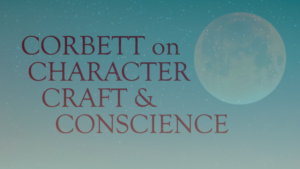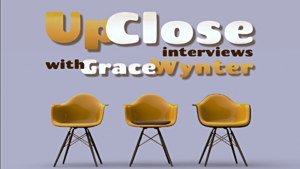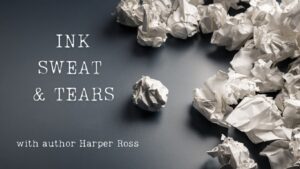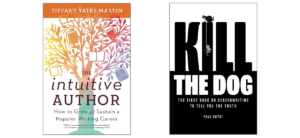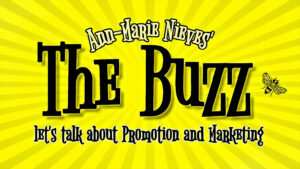Community
Books have been getting a lot of bad press lately. According to Penn America’s website, pen.org, more than 16,000 book bans have been implemented in U.S. public schools since 2021, 4,000 of which occurred in the 2023-2024 school year alone—more than at any other time since the McCarthy era of the 1950s. Public libraries have been under assault as well, with many people questioning their relevance and even advocating for their closure.
Estimates vary as to when books as we know them were first produced, but for the majority of time since the middle of the 15th century, when the invention of the printing press made them available to common people, books were considered precious objects by those who owned them.
The idea that books were treasures held true well into the 20th century, a fact I was reminded of recently when I pulled a few antique volumes off of a shelf in my living room. These clothbound gems, a couple of which were published in the mid-1800s, are marvels to behold.
The first in a two-volume set, Ruins of Ancient Cities by Charles Bucke, published in 1848 by Harper & Brothers of New York, features a detailed etching of ancient Athens across from its title page. The indentations made by the printing press on the book’s pages can still be seen if you look at its elegant serif typeset at just the right angle, a reminder that someone painstakingly set the type for all 360 pages by hand, a feat of craftsmanship few people living today could accomplish without error.
Perhaps even more impressive is Everyman’s Library: A Short Biographical Dictionary of English Literature by John W. Cousin. Published by E.P. Dutton & Co. of New York in 1910, the book’s endpapers feature a gorgeous, scrolling Edwardian design complete with a rendering of the Roman goddess Flora who symbolizes abundance. The publisher’s advertisement for the rest of the Everyman series at the beginning of the book is just as lovely, its type arranged to resemble a stylized tulip.
In my mind’s eye, I can picture the families who once owned these books, sitting in their living rooms, reading passages to one another aloud. Back when these hardcovers were published, reading often felt like an adventure. These books were prized possessions, not just because of their content, but because they were well made, beautiful to look at, and expensive to buy. Books like these said something about the people on whose shelves they were stored.
With their flimsy cover stock and recycled paper pages, modern-day print books, by contrast, often feel disposable. And although they are convenient to buy and read, and better for the environment, electronic books are like ghosts even in comparison to these, gone at the touch of a button.
Of course, the format of modern books makes them affordable and widely available to large numbers of readers. And the myriad types of other media readily accessible online makes it unlikely that books will ever regain the status they once enjoyed on a large scale.
Not unlike the American Arts and Crafts movement of the late 19th and early 20th centuries—a […]
Read MoreAmong the many powerful things I’ve read recently, the one that struck deepest as a writer of fiction came from Robert Stone’s piece in Paths of Resistance: The Art and Craft of the Political Novel. The piece was titled “We Are Not Excused,” and the section in question was this:
The practice of fiction is an act against loneliness, an appeal to community, a bet on the possibility that the enormous gulf that separates one human being from another can be bridged. It has a responsibility to understand and to illustrate the varieties of the human condition in order that consciousness may be enlarged.
The writer who betrays his calling is the one who, for commercial or political reasons, vulgarizes his own perception and imagination and his rendering of them … The reassurance [such writing] offers is superficial: in the end it makes life appear circumscribed. It makes reality appear limited and bound by convention, and as a result it increases each person’s loneliness and isolation. When the content of fiction is limited to one definition of acceptability, people are abandoned to the beating of their own hearts, to imagine that things which wound them, drive them and inspire them may be a kind of aberration particular to themselves.
Stone’s remarks reminded me of something Simone de Beauvoir wrote in a review of Violette LeDuc’s memoir, La Bâtarde:
She who writes from the depths of her loneliness speaks to us of ourselves.
Finally, I was also reminded of the philosopher Richard Rorty’s concept of ironism, which can be described as “fashioning the best possible self through continual redescription,” an effort that requires us to reach beyond our own experience to learn from the experiences of others—in no small part from reading and writing. This is how we create solidarity:
Solidarity is brought about by gradual and contingent expansions of the scope of “we;” it is created through the hard work of training our sympathies … We train our sympathies … by exposing ourselves to forms of suffering we had previously overlooked … to sensitize [ourselves] to the suffering of others, and refine, deepen and expand our ability to identify with others, to think of others as like ourselves in morally relevant ways. The liberal ironist, in particular, sees “enlarging our acquaintance” as the only way to assuage the doubts she has about herself and her culture.
The task of achieving solidarity is … divided up between agents of love (or guardians of diversity) and agents of justice (or guardians of universality).
I doubt I’m alone in taking heart from thinking of “guardians of diversity” as “agents of love,” though it is also disturbingly clear that this is a view currently under strenuous attack.
My point here, however, given that it’s Valentine’s Day, is to broaden our understanding of love as it pertains to the stories we write, and why we write them.
I imagine it seems somewhat counterintuitive to think of fiction that conforms to convention as enhancing a sense of loneliness or isolation. The whole point of writing in a conventional manner is to be popular, to gain as wide an audience as possible. Stone’s point is that this is an act of bad faith, […]
Read MoreGreetings, WU Family. In my first post of the year, I’m introducing you to Ann Michelle Harris. Ann Michelle is an attorney by day, and at night, she writes romantic suspense and fantasy/speculative fiction with diverse characters and positive social justice themes. In today’s Q&A, she shares how her work in the areas of poverty, abuse, and child welfare guides her, how that work inspired her novel, North, and why she feels building community is one of the most important things a writer can do for their career.
GW: One of my favorite parts of this series is learning about an author’s origin story: the thing that propelled you from someone who only thought about writing to someone who actually wrote and has a book out. So, what’s your author origin story—in other words, why did you start writing and keep writing?
AMH: I have loved reading adventure stories since I was very young. I was an English major at Penn so I loved not just stories but also story analysis, themes, and structure. Several years ago, I went through a stressful time in my life and began immersing myself in escapist stories as a form of comfort. After months of consuming other people’s stories, I decided to become a contributor of short stories to a public writing forum. Positive responses convinced me that I might have a larger story worth telling and that I could be brave enough to take the risk to try to tell it. I specifically wanted to write an adventure story in honor of my children. Shortly after this, the pandemic came and gave me even more stress but also much more time to write since I no longer had to spend hours commuting to the office each day (and it gave me plot inspiration). That extra time allowed me to dig deeper into creating a full manuscript and begin the process of querying.
GW: Can you tell us about your path to getting North published?
AMH: After completing my manuscript, I began to query it to a few agents and independent publishing houses. I got rejections, but one rejection from a large indie press had detailed feedback about the plot (particularly the ending) and that helped me tweak some elements. I also worked with a developmental editor, a beta reader, and a critique group to fine-tune the scene structure and build more tension in the story arc. By then, I had heard from a few writers that it is sometimes more accessible to directly find a publisher than to find an agent. I had another historical gothic manuscript that was getting a lot of traction with agents, but I decided to pitch North to a small press at a writing conference, and they loved it after reading the full story. After I signed the publishing contract, I continued to fine-tune the manuscript and then worked with the publisher for editing, galleys, and cover design. I tweaked everything until it was ready for submission to the distributor, and then finally it went into pre-order. I used my pre-launch time to promote the book online, connect with readers, and lean heavily on the wisdom of my more experienced writer colleagues, who were incredibly supportive. Then the big day came […]
Read MorePlease welcome back long-time community member Keely Thrall as our guest today!
Keely writes contemporary and paranormal romance and is a proud member of the Stays Up Too Late Society of Book Addicts. (Their motto: “Just one more page, I swear!”) Her next short story, “The One That I Cherish” – in the Finding Forever Limited Edition Wedding Romance Collection – is available for preorder. Learn more about her books on her website, HERE.
Read on to learn about her efforts to grow a local writing community — especially if you live near Dulles, VA!
Welcome, Keely!
In March of 2024, I heard a call to step up to leadership in my local writers group.
Like any sane person, I stuck my fingers in my ears and said, “I’m not listening.” I had my priorities straight: write more stories, continue publishing, get better at marketing. Sell a few books.
But over the next two months, the whisper resurfaced, exhorting me, “It’s time.”
Time to put my strengths back into service in support of Washington Romance Writers (WRW), the writing community I’ve called “home” for 25 years.
That March, members of WRW were gathered at a rare in-person presentation and the then president asked, “What do you want from this community?” Among the replies:
“I want something on worldbuilding.”
“I’d like help with social media marketing.”
“How do I get better at conflict?”
“What should I include in my newsletter?”
All practical requests geared to helping writers at various stages. Yet even as folks voiced their individual asks, one wish was universally expressed:
“Nobody else understands me the way writers do.”
“I miss my people.”
“I want to network with other word nerds.”
“I crave more of the inspiration and support that comes when I’m with my writer pals.”
“I need more writer buddies.”
The common thread: each of us yearned for more time in the company of writers. For deeper connection.
Now, don’t get me wrong. It’s not that online communities don’t allow for building strong ties. I’m still logging into a morning Zoom writing session with a group I started back in May 2020. And, the leaders of Washington Romance Writers during the pandemic years kept our community up and running online when it could have poofed into nothingness.
But in March 2024, in that room with all of us rocking the particular high that comes from grooving with folks who are wired for story, that whisper reminded me: creating this kind of welcoming space is one of my superpowers.
Flash forward to July 1 when my term as president of Washington Romance Writers begins. We have 42 members (our pre-pandemic numbers hovered between 250-300). We have a July word count challenge starting. But the rest of the program year is a blank slate and I’m holding two priorities:
How could our team show folks that entrusting us with their time, attention and dollars would net them a worthwhile ROI? Could we develop a mix of online and in-person offerings to maximize member and potential member engagement opportunities?
Equally as important, how could we do this without burning ourselves out or eating through the chapter’s funds?
We make two immediate low-no cost/high impact changes:
We set up a […]
Read MoreDesign by Camille LeMoine
This is the eighth installment of these nerdy linguistic posts, an accidental series I stumbled into on seeing how many of the Writer Unboxed community share my appreciation for the delights and idiosyncrasies of words.
Generally I like to approach these posts from a fairly light and irreverent perspective, but today, to borrow from Hamilton, can I be real a second? For just a millisecond? Let down my guard and tell the people how I feel a second?
For all our gleeful enjoyment of the many vagaries of words, they are among the most powerful forces of society and history, which makes authors the formidable warriors who craft and wield them. As the cliché goes, the pen is infinitely mightier than the sword.
And like any warrior, we can choose to use our sword to destroy or to build.
Heroes Rise in Darkness
How many stories have you read where the hero triumphantly rides into a world where all is good and right and bending toward justice? That wouldn’t be much of a tale to tell; what makes a hero heroic is how he handles a world gone wrong.
Maybe it’s hubris or self-importance or just my own in-built bias toward creativity and the power of language, but I think authors and artists are often the heroes of history. Storytellers shed light in the darkness, increase connection and understanding, open minds and hearts. Yes, it may be politics and people who shape the course of the world, but it’s the storytellers who can help shape the ideas and mindsets behind them.
But it requires heroes, those who can transcend the oh-so-human reactions of fear and hopelessness and rage and contempt and disgust to spin a golden thread to connect one person to another, and to teach them to spin their own golden threads to draw in others. Weaving together all those tiny threads can create an unbreakable rope that can help guide all of us toward the good.
No one was ever attacked into changing their mind. Few people reexamine their views and search their heart because they were shamed or mocked or belittled or dismissed. On the contrary, those approaches are almost guaranteed to make most people entrench, to double down on their worldview, and to feed the flames of their own fear or hate or rage.
In moments like that we look to the heroes to help save us, to help create a future with promise and hope and love and good. And the heroes are those who can transcend their own darker feelings to help spread light into the world.
We are the heroes we’ve been waiting for, we wordsmiths. We have to be. The ones who understand the power and potential of that mighty tool we wield to divide or to unite.
Words Can Wound—or Heal
In 2018, outspoken comedian Sarah Silverman tweeted that she was trying to understand people who voted for Donald Trump, and was subsequently attacked on Twitter by a man trying to cut her down with his words, including a potent one intended to diminish and vilify women that many people have a visceral reaction to (it refers to female genitalia and rhymes with punt).
The understandable impulse is to strike back, particularly for those of […]
Read MoreAs a connoisseur of writing how-tos (and yes, I had to look up how to spell connoisseur – and okay, “addict” might be a more accurate word), I have read a TON of them. And while I find valuable nuggets in nearly all of these books, lately I’ve noticed that many recent writing how-tos are essentially sharing slightly different flavors of some very similar core information.
So when I encounter a book about writing that offers some new (to me, at least) ways of looking at the craft, I sit up and take notice. My gushing ode to Chuck Palahniuk’s Consider This in this 2020 post is an example.
I just finished reading another such departure from mainstream writing how-tos: The Intuitive Author, by WU’s own Tiffany Yates Martin, who, in addition to being a wonderful writer and editor, is also an insanely good teacher and public speaker. Seriously, if you ever have the opportunity to attend one of Tiffany’s sessions or events, take it. And if you’re an author who speaks at literary conferences, trust me: you do NOT want to follow Tiffany. She’s that good.
Having seen Tiffany’s amazing presentation on backstory at WU’s brilliant 2022 OnCon, I knew what an extraordinary editorial mind she has, and how good she is at getting under the hood to amp up and improve your writing at multiple levels. So with The Intuitive Author, I guess I was expecting a book full of deep analysis into the mechanics of writing, along with some sophisticated editorial techniques. Instead, much of the analysis she offers in the book leans more towards the psychology and strategy involved in pursuing – and ideally, enjoying – the life of a writer.
I quickly realized I was not reading The Average Writing How-To, and I dove into the book with my curiosity piqued. (And yes, I had to double-check whether it was “piqued” or “peaked.” Got it right the first time – yay! Hey, it’s the small victories. But I digress…)
In short, The Intuitive Author is filled with insights and perspectives quite unlike those offered in the vast majority of writing how-tos currently on the market. And reading Tiffany’s book made me think about another writing how-to I’d recently read that takes a pretty big departure from most conventional writing wisdom: the provocatively titled Kill the Dog: The First Book on Screenwriting to Tell You the Truth, by author and screenwriter Paul Guyot.
What does this Guyot dude have against dogs, anyway?
Nothing, actually. Instead, the animal Guyot truly hates – and is taking a not-at-all thinly veiled swipe at – is the cat. Specifically, the cat in the well-known “Save the Cat!” series created by the late Blake Snyder.
If you’re not familiar, Snyder’s initial Save the Cat! book (STC to the cool kids) burst onto the scene in 2005 with a VERY structured set of templates for storytelling, which he reverse-engineered from studying many successful movie scripts. Targeted at aspiring screenwriters, Snyder’s methodology offered a compelling framework for them to adopt […]
Read MoreTherese here to introduce you to someone near and dear to me: my son, Liam. ❤️
Liam’s screenwriting journey started as a Rod Serling fan. Inspired by Serling’s allegorical storytelling, he attended USC’s film school where his thesis film, You Missed a Spot, was selected in over 30 festivals internationally. Since then, he has worked on the production-side of the industry, most recently wrapping as the line producer’s assistant on FX’s Mayans MC.
You may have heard about the downturn of work in Hollywood, and so Liam has bided his time between jobs doing something he was likely, inevitably, genetically born to do: WRITE. That the short story he’s written, that he’s now determined to see produced (see Kickstarter), taps into a real-life wound should come as no surprise to you, WU community.
But I’ll let Liam tell you about that, WU-style. Take it away, kiddo.
As writers, we often face the challenge of crafting stories that feel authentic, especially when venturing into experiences we haven’t lived ourselves. This was the case for me when I set out to write my new short film, Venus in Furs, a psychological thriller that personifies heroin as a woman.
I’m a filmmaker living in Los Angeles, and my life was deeply impacted when one of my close friends from film school overdosed on drugs laced with the powerful synthetic opioid, fentanyl. I remember the first time I met him—we were attending a mandatory lecture on the cinema and music of the 1960s. We were sitting on either side of another student we both had a crush on and got into a pointless debate about The Doors, as if this poor girl remotely cared about some band from five decades ago. He demolished me in the debate. The guy was like Jim Morrison himself—long-haired, charismatic as hell, with a ribcage you could practically see through his t-shirt.
After the girl successfully escaped, the two of us grabbed lunch and admitted we were only trying to impress her. Instant friendship.
During lunch, our conversation abruptly ended when he mentioned he was going to leave to smoke some opium. I assumed he was joking at the time—I mean, I had just met the guy. What, opium? You mean that shit from the 1800s? But over time, I came to learn that he was affected by a powerful addiction that, to him, wasn’t some unshakable affliction as often depicted, but rather the means to radically take hold of his post-high-school freedom and live out the fantasy of the rock ’n’ roll lifestyle he so loved.
The last time I saw him, I visited his three-bedroom high-rise in Downtown Los Angeles, full of vintage records and a collection of Les Pauls paid for with credit cards he couldn’t pay off. It was the Fourth of July, and he was excited to launch fireworks at passing cars. At that point, I had witnessed the drug obliterate his ambitions. He had stopped attending classes, gained weight, and lost that magic spark that drew me to him in the first place. Heroin took everything from him. And yet he was so happy to participate in his own self destruction. In fact, sitting there with all his guitars and […]
Read More


